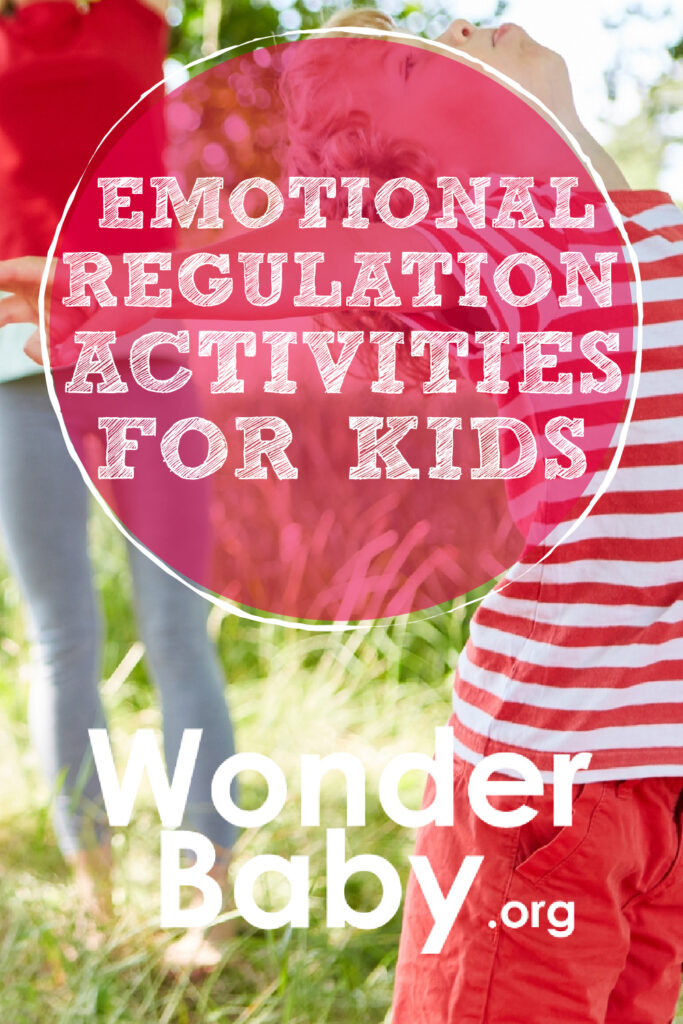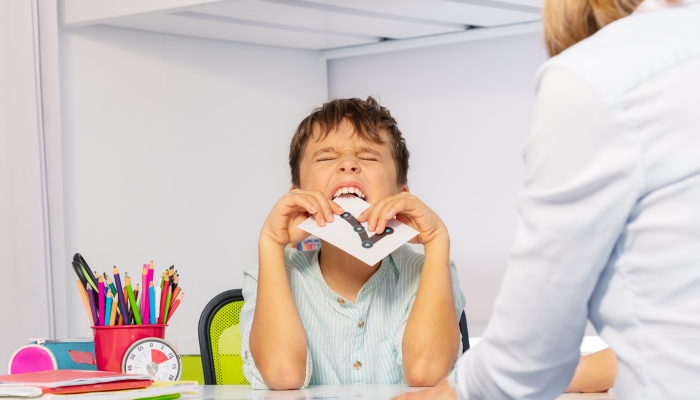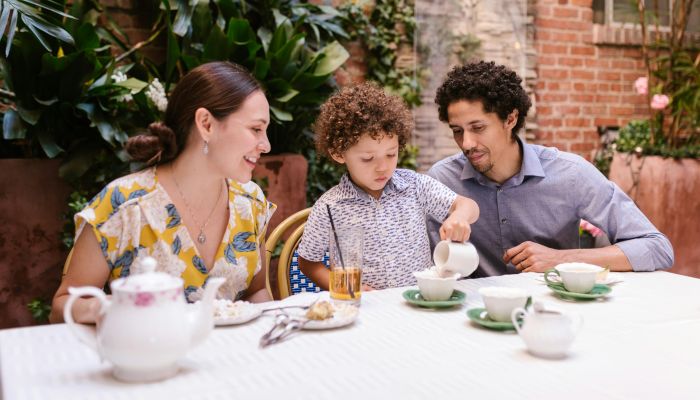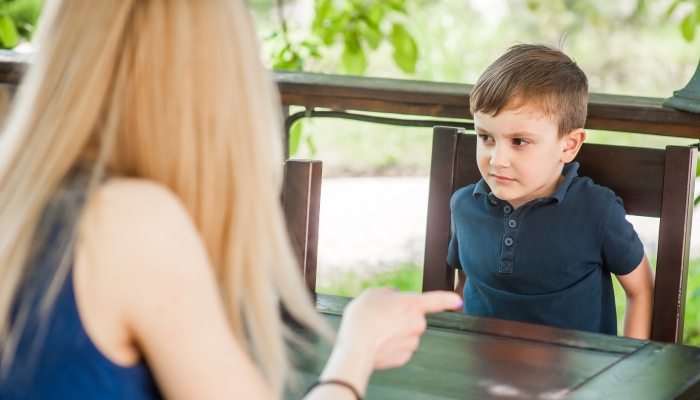5 Emotional Regulation Activities for Kids

- Emotional regulation helps kids deal with big feelings and stay calm.
- Teaching your kids to regulate their emotions through creative, calming, and sensory-based activities improves their emotional intelligence and ability to cope with challenging situations.
- Adding these activities into your child’s daily routine can help them develop good mental health.
Are you sometimes (or more often than you’d like to admit) unable to calm your child and help them deal with their emotions in a healthy way? I’ve been there, and I know how frustrating it can feel.
Trying to talk to or soothe your child during a tantrum can seem impossible. After hitting my limit with those moments, I decided to prepare in advance rather than wait for the next emotional storm to hit.
That’s how I first learned about emotional regulation activities. Since incorporating them, my kids have learned to manage their feelings better, and those overwhelming outbursts have reduced.
Below, I share five of my favorite emotional regulation activities. Only one or two might work for your child, but adding what does to your daily routine can really make a difference.
Activity 1: Deep Breathing Exercises
Deep breathing exercises are one of the simplest, most effective emotional regulation activities you can introduce to your kids. Whether they’re dealing with big emotions or just need to find their emotional balance, teaching them to take deep breaths will make a difference.
While future study is still required, different research, like the 2017 review titled The Physiological Effects of Slow Breathing in the Healthy Human11. Russo, M. A., Santarelli, D. M., & O’Rourke, D.. The physiological effects of slow breathing in the healthy human. Breathe. 2017;13(4), 298–309. https://doi.org/10.1183/20734735.009817, and the 2023 remotely conducted trial titled Brief Structured Respiration Practices Enhance Mood and Reduce Physiological Arousal22. Balban, M. Y., Neri, E., Kogon, M. M., Weed, L., Nouriani, B., Jo, B., Holl, G., Zeitzer, J. M., Spiegel, D., & Huberman, A. D.. Brief structured respiration practices enhance mood and reduce physiological arousal. Cell Reports Medicine. 2023;4(1), 100895. https://doi.org/10.1016/j.xcrm.2022.100895, conclude that breathing exercises help regulate the oxygen-carbon dioxide balance in the bloodstream, reduce anxiety, and produce great improvements in mood.
How to Teach Deep Breathing to Your Kids
Start with the basics:
- Find a comfortable spot.
- Have your little one sit or lie down.
- Ask them to focus on their breathing and pay attention to how it makes them feel.
My kids love it when I tell them to pick a cake and flower. First, they need to smell the flower. Next, they should blow out the candles on their cake.
- As your kids take a deep breath in, count to four. Encourage them to hold their breath while you count. This pause helps them feel in control and aware of their body sensations.
- Count to six as they breathe out. This long breath can help release negative emotions and calm their emotional state.
You should practice this a few times while your child is already in a relaxed state. This will make it easier to introduce in-and-out breathing when they’re dealing with difficult emotions.

You can also incorporate mindfulness exercises into this routine, such as asking them to notice how the air feels as it enters and leaves their body. This practice not only helps with regulating emotions but also improves self-awareness and emotional intelligence.
The Benefits of Breathing Exercises
Deep breathing exercises teach children to effectively regulate their heart rate, making it easier to manage intense emotions.
When kids practice deep breaths, they help lower their stress hormones, allowing them to stay in the green zone—a state of emotional balance where they can think clearly and respond calmly.
Deep breathing is also a healthy coping strategy your kids can use anytime, anywhere.
Whether at home, in school, or in a group setting, taking a few deep breaths can help them regain control over their emotional responses and self-regulate.
This is especially important when dealing with challenging situations or big feelings that might otherwise lead to emotional dysregulation.
Activity 2: Calm Down Kit
A calm-down kit is a personalized collection of items that can help your little one manage stress and self-regulate when they’re feeling overwhelmed.
How to Put Together and Use a Calm-Down Kit
Generally, calm-down kits include:
- Stress balls
- Sensory toys
- Coloring books
- Stuffed animals
- A feelings wheel
You can add whatever you know might calm your child and even ask them for help choosing items. This improves the chance of their calm-down kit working, increases emotional awareness, and gives them a sense of control.

Place all the items in a small box or bag that’s easy to access. Teach your little ones to use their calm-down kit when they feel big emotions coming in. It’s important to remind them that it’s okay to take a break and use their kit whenever they need to.
The Benefits of a Calm-Down Kit
Calm-down kits give children a practical way to regulate their different emotions independently. When they have something on hand to manage their emotions in a healthy way, they can navigate challenging situations with ease. This practice also reinforces self-regulation skills.
Activity 3: Art and Drawing
If your children are creative, art and drawing could be perfect emotional regulation activities. By expressing how they feel on paper, they might find it easier to talk about their emotions and explore different feelings.
How to Use Art and Drawing
If your child is nonverbal when they’re feeling overwhelmed, you can supply them with crayons, markers, and paints. Encourage them to draw or paint the particular emotion they’re experiencing, or simply let them create whatever comes to mind.
This can also be a great time to discuss the body sensations they associate with specific emotions.
The Benefits of Art and Drawing

Art can be a fun way to express emotions and develop emotion regulation skills. By giving your kids a constructive outlet for their emotional responses, they can also learn to self-regulate and turn their strong emotions into something tangible, which could make it easier for them to understand and manage.
It also boosts self-confidence as they learn to express themselves and handle negative thoughts or big feelings in a healthy way.
Plus, creating art can be a relaxing, meditative process that naturally promotes emotional balance and well-being.
Activity 4: Storytelling and Role-Playing
When kids tell stories and role-play emotions, they have a chance to explore and understand their feelings in a safe space.
How to Use Storytelling and Role-Playing for Emotional Regulation
Storytelling and role-playing are great activities to be used before and during emotional episodes.
You can get your kids comfortable with either by encouraging them to create stories in which characters experience big emotions or face challenging situations.
Ask them to tell the story or act out scenarios, taking on different roles to see how certain emotions play out.
Here’s an example:
- Have your little one role-play a character who feels angry because their teacher isn’t paying attention to them, even though all the kids in her class are asking questions simultaneously.
- Next, ask your child to role-play the teacher who feels overwhelmed.
- Encourage them to use healthy coping strategies for each emotion.
This not only makes it fun but also helps them practice problem-solving and develop empathy by putting themselves in someone else’s shoes.
The Benefits of Storytelling and Role-Playing
Storytelling and role-playing help kids improve their emotional regulation skills by allowing them to rehearse how they might handle intense emotions in real life.

These activities enhance emotional intelligence and self-awareness as children learn to recognize and name different feelings they or others might experience.
This creative approach also supports social-emotional learning in a group setting, helping children navigate challenging situations and interactions with others in a healthy way.
By exploring different scenarios, your child builds social-emotional skills and will gain confidence in their ability to self-regulate.
Activity 5: Sensory Play
Choosing an emotional regulation activity that your child will enjoy is a big determiner of its success. Sensory play stimulates the senses and improves emotional regulation, and most kids respond well to specific textures, sounds, and movements.
How to Incorporate Sensory Play
You can set up a sensory play station with materials like playdough, kinetic sand, water beads, or even a simple water table. Having music ready or go-to body movements can also be helpful. The important thing is to choose sensory toys and audio that work for your child.
When your little one is experiencing intense emotions, encourage them to explore their sensory station or play music that helps keep them calm.

For some kids, specific movements or touch can keep them grounded.
The Benefits of Sensory Play
Sensory play is an effective way for kids to emotionally regulate and manage strong emotions without needing to talk about them.
It’s particularly helpful for non-verbal or younger kids who might struggle to express their emotions healthily. Engaging with different textures and sensations can help them find a sense of calm and emotional balance.
This type of play also supports the development of self-regulation skills and can help manage negative emotions or stress hormones.
Emotional Regulation Helps Kids Thrive
Emotional regulation activities teach kids about self-awareness and develop emotional maturity.
When children learn to identify their emotional state in a supportive environment and know which tools can help them shift from negative to positive emotions, they gain control over their feelings and improve self-regulation.
Whether they practice mindfulness and take deep breaths, draw their feelings, or fidget with a toy until they feel calmer, emotional regulation improves overall well-being, making it one of the most essential skills to teach your kids.
References
- Russo, M. A., Santarelli, D. M., & O’Rourke, D. (2017). The physiological effects of slow breathing in the healthy human. Breathe, 13(4), 298–309. https://doi.org/10.1183/20734735.009817
- Balban, M. Y., Neri, E., Kogon, M. M., Weed, L., Nouriani, B., Jo, B., Holl, G., Zeitzer, J. M., Spiegel, D., & Huberman, A. D. (2023). Brief structured respiration practices enhance mood and reduce physiological arousal. Cell Reports Medicine, 4(1), 100895. https://doi.org/10.1016/j.xcrm.2022.100895

Related Posts

Behavior
Understanding Intermittent Explosive Disorder in Children
Are you worried about your child’s unexpected aggression and explosive behaviors? Learn how to support a child with intermittent explosive disorder.

Behavior, Special Needs
5 Tips for Dining Out with Children Who Have Sensory Sensitivities
Worried about dining out with sensory sensitivities? Try these tips for less stress and more fun the next time you take your family out to eat.

Behavior
Is Your Child a Compulsive Liar?
Are you worried your child is a compulsive liar? Read this article for everything you need to know about compulsive lying in children.